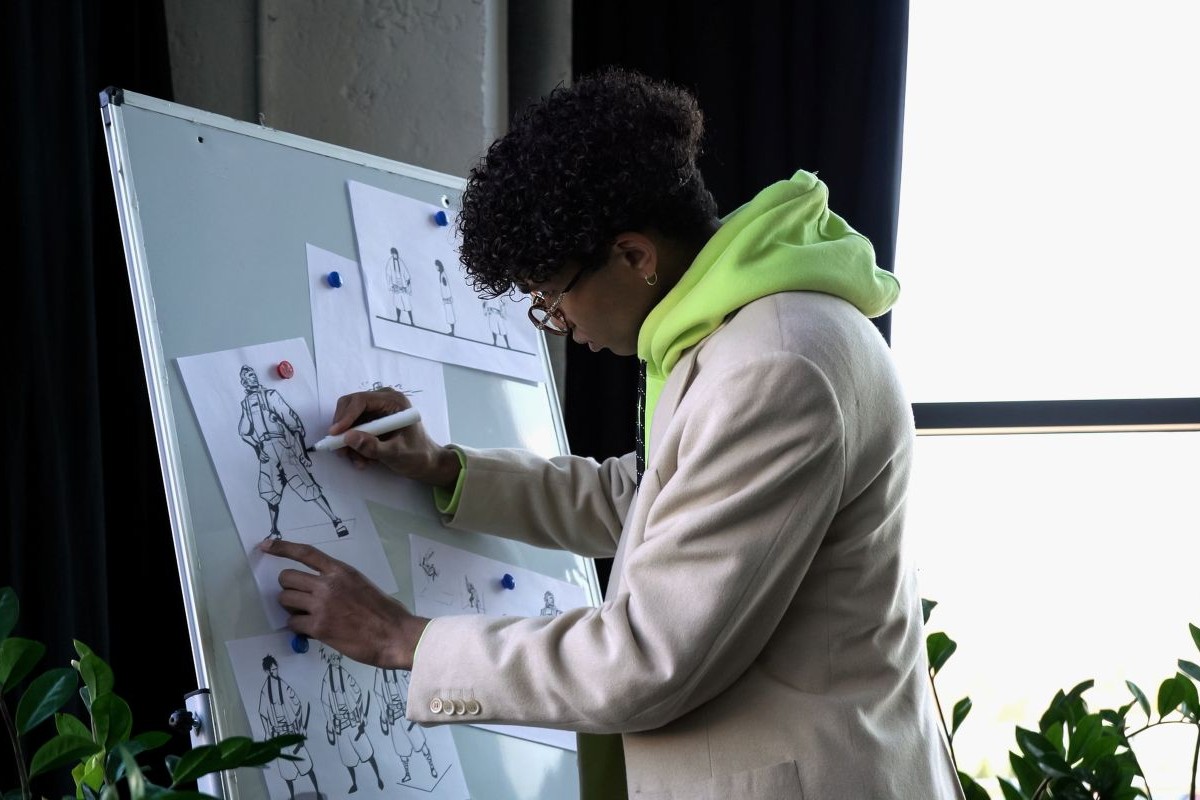
South Africa Animation Studio: Onion Skinning
When you watch an animated film or show these days, have you ever found yourself thinking, “Wow, look how realistic that looks”? Maybe you have said it yourself or heard someone else remark on how far animation has come since they were younger. It is not just about the technology or the art style—it is about the techniques that make animation so smooth and lifelike. One of the key techniques behind these fluid movements is called onion skinning. In this article, we will dive into what onion skinning is, its origins, and how it continues to play an essential role in creating seamless animation. For a South Africa animation studio, it is a vital step in ensuring that every animation is not only consistent but feels as natural and dynamic as the real world.
What Is Onion Skinning?
Onion skinning is a technique used by animators to create smoother, more natural transitions between frames. In traditional animation, it involved placing a translucent sheet of paper (or “onion skin”) over a drawing to see the previous or next frame. This allowed animators to track motion and ensure that the character’s movement was fluid and consistent. Today, this technique is used digitally in animation software, allowing animators to view multiple frames at once. The result? More seamless and believable animation that keeps your audience engaged.
For a South Africa animation studio, mastering onion skinning is essential. Whether working on 2D animation or more complex forms like 3D animation, this technique helps ensure that characters move naturally and that every motion feels well-paced
A Little History Behind Onion Skinning
Onion skinning did not come about overnight. It has a history that dates back to the early days of animation in the 1930s. The technique became popular through studios like Disney, where animators would place onion-skin sheets over their drawings to help visualise the movement from frame to frame. This helped animators solve one of animation’s most challenging problems: ensuring smooth motion without jerky, unnatural jumps between frames.
Over the years, onion skinning evolved. With the rise of digital animation in the 1990s, the technique was adapted to software programmes like Adobe Animate and Toon Boom, where the process was digitised. Today, onion skinning is as vital in digital animation as it was in hand-drawn techniques. For a South Africa animation studio creating digital animations, the digital version of onion skinning makes the process much more efficient, offering a clearer way to review and adjust the animation as it progresses.
How Onion Skinning Fits into the Animation Production Pipeline
Onion skinning is used at various stages of the animation production process. It is particularly helpful during the production phase, where animators are creating the keyframes and in-between frames, which are essential for smooth transitions between movements.
Pre-Production
While onion skinning is most commonly associated with the animation process itself, it starts earlier. During pre-production, animators plan and storyboard the keyframes that will guide the animation. Although onion skinning is not typically used during this stage, the principles of smooth transitions and consistent movement are already being considered in the storyboard and concept phases.
Production
Here is where onion skinning takes center stage. During the production phase, animators are busy creating the series of frames that make up the animation. They rely on onion skinning to see the previous and next frames of animation as they work, ensuring that the movements flow naturally. This helps the animator adjust the timing, spacing, and poses to avoid any awkward or jarring transitions.
For a South Africa animation studio, the use of digital tools or even 3D software for stop-motion animation allows onion skinning to be applied more efficiently, enhancing the quality of animations. These tools help animators tweak individual frames, ensuring consistency throughout the entire sequence.
Post-Production
Once the frames are created, the animation enters the post-production phase. Here, onion skinning continues to serve a purpose—helping animators fine-tune the movement to make sure every transition is smooth. They can adjust the timing of movements, tweak poses, and make sure the animation flows seamlessly from one frame to the next.
What Happens When Onion Skinning Is Not Used?
So, what can go wrong if onion skinning is not used? A lot, actually. Without this technique, animators risk creating animations that are jerky or inconsistent. If the frames are not aligned properly, the movement can appear unnatural, making it difficult for the audience to connect with the characters or the story.
For instance, when animators do not have onion skinning to help visualise transitions, a character’s movement might suddenly “jump” from one position to another. These awkward, unnatural motions can disrupt the overall flow of the animation, taking viewers out of the experience.
For a South Africa animation studio, creating animations without onion skinning could mean more time spent fixing issues with consistency and flow, leading to delays and a less polished final product.
How Onion Skinning Enhances Expression and Physicality
While onion skinning is often associated with movement, it also plays a vital role in animating expressions and physical actions. This technique allows animators to refine the subtleties of their characters’ movements and facial expressions. By reviewing multiple frames at once, they can adjust things like the arc of a jump, the timing of a facial expression, or the weight of a character’s steps.
Take, for example, animating a character’s smile. Without onion skinning, animators might find it difficult to ensure that the smile progresses smoothly, and that the character’s face maintains consistent movement. With onion skinning, they can make sure each frame aligns with the others, adjusting the movement in tiny increments to make it look as natural as possible. For a South Africa animation studio, being able to refine these tiny movements is what separates a good animation from a great one, giving the characters more emotional depth and realism.
How Onion Skinning Has Evolved
Onion skinning has certainly come a long way since the days of paper sheets and pencil drawings. Today, digital animation software allows animators to view multiple frames at once, with some programmes even offering colour-coded overlays to distinguish between frames. This helps animators quickly identify problem areas and make adjustments without the need for physical paper or cumbersome setups.
For a South Africa animation studio, these modern tools streamline the animation process. They provide a more intuitive and efficient way to adjust frames, saving time while improving the overall quality of the animation.
Conclusion
The next time you watch an animation with smooth, lifelike movement, take a moment to appreciate the role of onion skinning. This type of onion skinning might not involve as much crying as the one you are used to, yet it demands far more skill and precision. It might not get all the attention, but it is one of the techniques that helps animators perfect every frame. And if you are curious about where it all started, here is a fun fact: onion skinning played a pivotal role in the animation of Snow White and the Seven Dwarfs in the 1930s. Disney animators used it to ensure smooth transitions and refine character movements, a breakthrough at the time.
Today, whether working with 2D or 3D animation, onion skinning remains a key technique to keep animations flowing seamlessly. For a South Africa animation studio, it is an essential tool that ensures each movement feels natural and polished. It may not always be visible, but its impact is clear in every frame.
Smooth animation does not happen by accident—techniques like onion skinning make all the difference. Sound Idea Digital knows how to make every frame count, so reach out and let’s get started on your next project.
We are a full-service Web Development and Content Production Agency in Gauteng specialising in Video Production, Animation, eLearning Content Development, Learning Management Systems, and Content Production.
Contact us for a quote. | enquiries@soundidea.co.za | https://www.soundideavideoproduction.co.za| +27 82 491 5824 |

